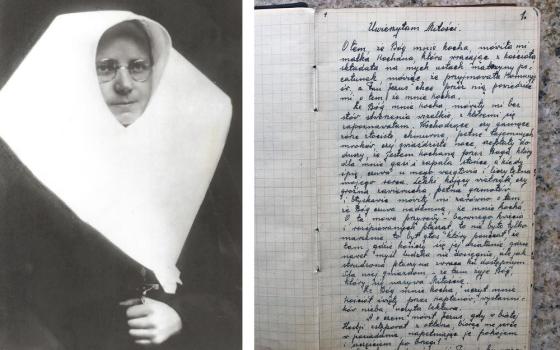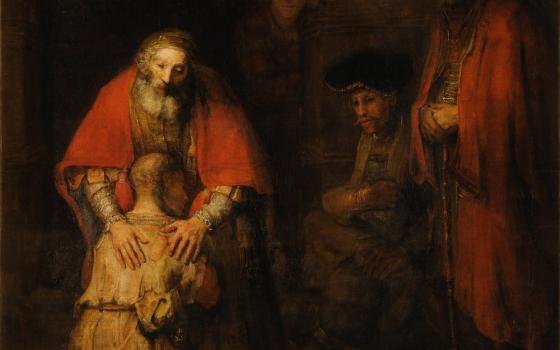It seems, in what can be gleaned from the final report of the doctrinal assessment of the Leadership Conference of Women Religious, that a certain reasonableness ultimately prevailed in an exercise that has rightfully been called "a disaster."
Religious women remain one of American Catholicism's great treasures. Of all the matters in the church in need of investigation, the organization whose members are leaders of more than 80 percent of women religious in the United States was not one of them.
The Congregation for the Doctrine of the Faith's "assessment" of LCWR was a disaster, an unnecessary sign of distrust. Keeping that assessment in mind should temper the celebration coming from some quarters of the church and commentariat acclaiming the success of "dialogue."
If there is reason to cheer, it is that the women managed to impress upon the Vatican that they had no intention of engaging the issue exclusively on the arcane protocols of an all-male clerical culture in which only its members are clued in to the means of survival. So the women held out, apparently (though no one is talking yet), for that conversation of equals.
In the meantime, the clerical culture received what must have been a stunning immersion into the reality of church as it exists beneath the hierarchical level. The raw fact -- a necessarily political fact, as it turns out -- is that most Catholics and many others know the nuns, have been helped by them or influenced by them in countless ways, while few people would know their bishop if he showed up at the front door.
The twin investigations -- the doctrinal assessment of LCWR and the investigation of U.S. orders in general by the Congregation for Institutes of Consecrated Life and Societies of Apostolic Life -- were both instigated by people inhabiting some of the most extreme corners of the church. Their narrow versions of Catholic identity and notions of what religious life should constitute are fast becoming history.
For all of the back-patting going on regarding the success of the dialogue between the nuns and Vatican authorities, it is enough to say that the women's strategy worked, at least enough to turn down the heat.
It seems obvious that Archbishop J. Peter Sartain quietly managed to diminish the culture warrior elements of the investigating team and conduct some reasonable discussions with the women. The election as LCWR president of Immaculate Heart of Mary Sr. Sharon Holland, formerly the highest-ranking woman working in the Curia and a respected leader among women religious, proved a savvy move by the U.S. organization.
Just as important, however, was the wise, deliberate leadership shown at the outset of the assessment itself by Most Precious Blood Sr. Mary Whited, Franciscan Sr. J. Lora Dambroski, Franciscan Sister of Perpetual Adoration Marlene Weisenbeck, Dominican Sr. Mary Hughes and Franciscan Sr. Pat Farrell. They laid the foundation for the relationship we saw emerge last month. Even under duress, they modeled the leadership they sought to engage: contemplative and collaborative, which was so eloquently voiced by Farrell in 2012 after the mandate was released.
Farrell, Franciscan Sr. Florence Deacon, St. Joseph Sr. Carol Zinn, Holland and St. Joseph Sr. Marcia Allen would hold the course until resolution -- no small task given pressures they felt from inside the organization and without, compounded by the intense media interest.
It is no coincidence that the Vatican jousting with U.S. nuns -- both the six-year visitation initiated by Cardinal Franc Rodé and the doctrinal investigation of LCWR -- came to a conciliatory end under the papacy of Francis. How much he directly had to do with either is unknown, but it is unlikely that the depictions of the sisters as in crisis and reflecting the secularism of American and European culture would have so suddenly turned positive under the previous papacy. The same sisters who had been characterized as a shade above enemies of the church were now granted personal visits with a pope who expressed his admiration for their work. Vatican officials were signing off on documents that verged on overuse of the term "gratitude."
We, too, are grateful that this chapter in church history has come to a close. In the short term, it seems that all is well. But at least two deeper questions remain unresolved.
What is stopping the Congregation for the Doctrine of the Faith from beginning a similar investigation of some other group or individual in the church today? The answer: nothing.
This "doctrinal assessment" began behind closed doors by accusers still unknown. Charges that impugned an entire class of women religious -- remember, they were charged with "corporate dissent" and heresy -- have been allowed to melt away. Where are those who leveled these charges today? Does that initial report remain in a Vatican desk drawer somewhere, ready to re-indict these women when the time is right and a new man is pope?
As long as the work of the doctrinal office is cloaked in secrecy and basic due process is ignored, that fear remains.
When will the male monopoly on power in the church end? This investigation was begun by men, conducted by men and ended when the men finally called for a truce. That is a flaw that goes deeper than a single Vatican congregation, because it touches on the very governing structures of the church.
We could easily make the case that these sisters have a true reading on the beating heart of the church -- what the people are doing, feeling, how they're hurting, how they experience the faith. But the sisters can never do more in governance than to advise a man. That's absurd. The inclusion of women into the leadership ranks of the church won't be easy -- reform and renewal never are -- but it is essential.


